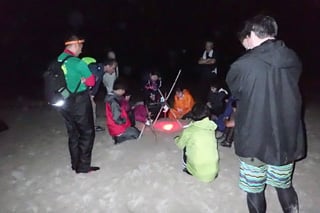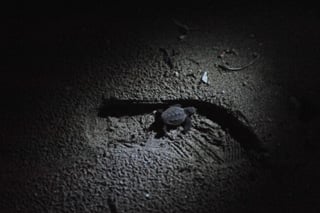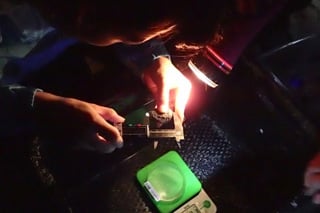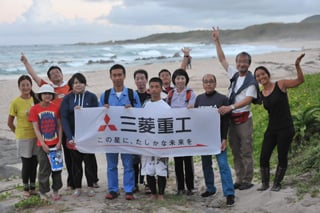Press Information
Since last year the MHI Group has provided support for the "Tanegashima Loggerhead Sea Turtle Survey" sponsored by the authorized NPO EarthWatch Japan. The fourth and final session of the 2016 survey agenda took place on August 26-28 with the participation of seven employee volunteers, joining volunteers from the general public. Under the guidance of Yoshimasa Matsuzawa, an expert in loggerhead sea turtles, and members of Turtle Crew, a local NPO, the volunteers undertook nighttime observations on the beach.
The fourth survey session was originally scheduled to take place at Nagahama Beach, but because of the effects of a typhoon the location was changed to the Anno area of Nishinoomote City in the north of the island. The participants began by searching for nests where newly hatched babies were about to take leave and head out to sea. As soon as a baby turtle appeared, a PIT (passive integrated transpoder) tag was inserted into its ingunal region without impeding its movement, and it was quickly discharged.
On the first day, as soon as the participants began walking on the beach at Anno to check for nests, they found a baby turtle with its head peeking out. With everyone on the survey team observing, they were able to see the baby turtle off safely into the water. For the team to witness the hatching of a baby turtle - something very elusive even for the people of Tanegashima - so soon after beginning their survey, was truly a stroke of good luck. After dinner, the survey began in earnest, and the team found a number of nests seemingly on the verge of hatching. Altogether they attached PIT tags and took measurements of eight turtles.
On the second day, the survey was carried out in the same location, this time in intermittent heavy rain. The team found a nest where a whole group of babies seemed about to leave. But after waiting until 2 a.m., ultimately only two baby turtles appeared.
As the foregoing indicates, finding newly hatched baby sea turtles isn't simple and demands a great deal of perseverance. One of the employee volunteers who participated reported that although an encounter with a large number of newly hatched babies proved impossible, he was nevertheless deeply moved to have had a rare experience like this for the very first time.
In accordance with the CSR Action Guidelines, the MHI Group will continue to promote initiatives aimed at protecting the environment and ecosystems and making regional contributions.
- http://www.mhi-global.com/news/story/csr160620.html
- http://www.mhi-global.com/news/story/csr160822.html

Observing a nest during the night

A newly hatched baby heading out to sea

Measuring a baby sea turtle

Group photo on the beach
About MHI Group
Mitsubishi Heavy Industries (MHI) Group is one of the world’s leading industrial groups, spanning energy, smart infrastructure, industrial machinery, aerospace and defense. MHI Group combines cutting-edge technology with deep experience to deliver innovative, integrated solutions that help to realize a carbon neutral world, improve the quality of life and ensure a safer world. For more information, please visit www.mhi.com or follow our insights and stories on spectra.mhi.com.






